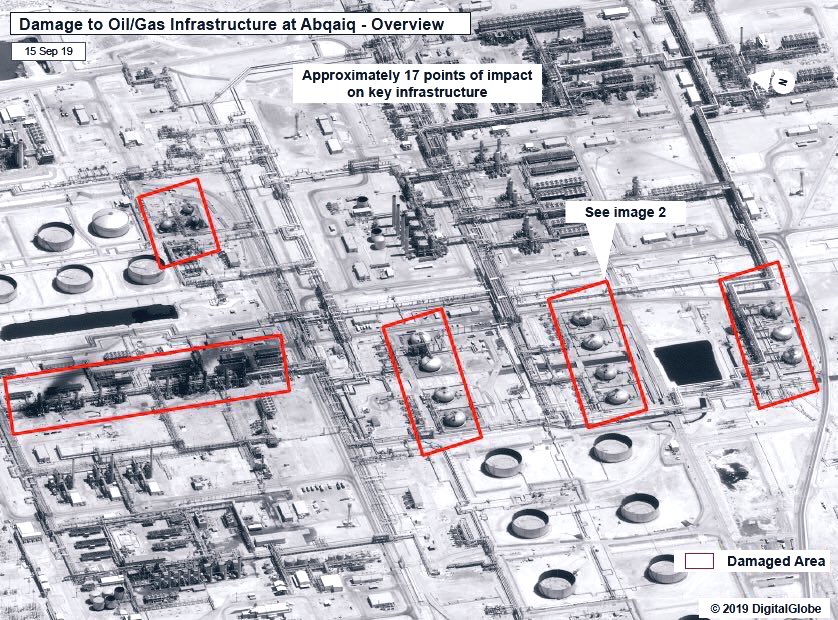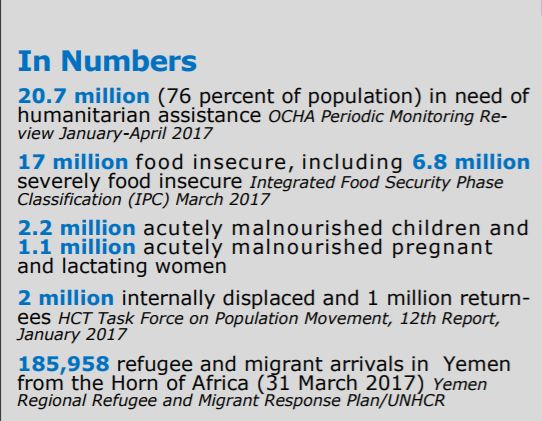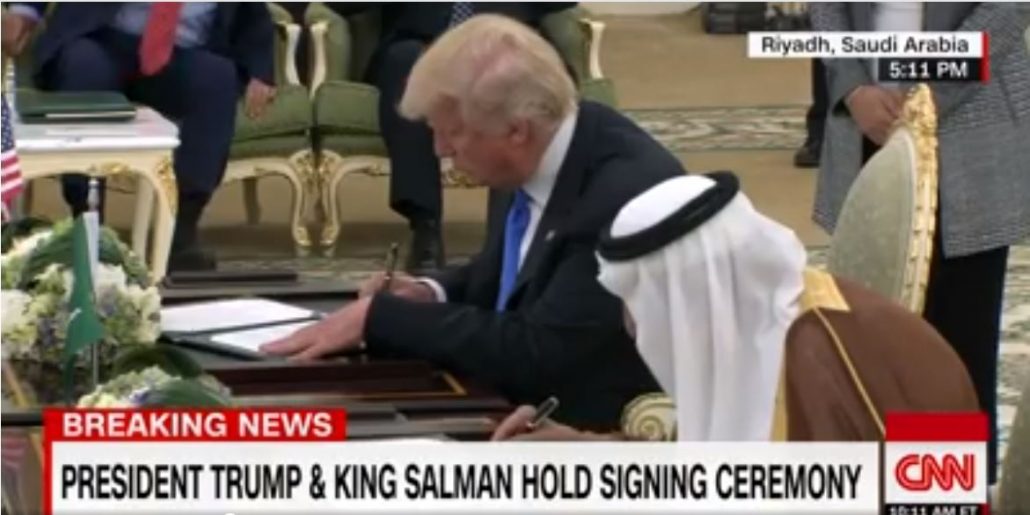Something Smells — and It’s Not Burning Oil
[NB: Check the byline, thanks! /~Rayne]
Others have offered more trenchant responses after Trump’s tweets as well as Sen. Lindsey Graham’s warmongering, and Secretary of State Mike Pompeo’s drivel about the apparent attack on Saudi Arabia’s Abqaiq oil processing facility this weekend. Let me offer my two cents about the attack.
This is an early assessment of what happened by a Bloomberg correspondent:
BREAKING: U.S. government releases satellite pictures showing the surgical strike against the Saudi oil facility of Abqaiq — direct hits on the critical spheroids used to treat the crude | #OOTT #SaudiArabia 🇸🇦 🛢⛽️ Here’s our latest update, with @nayrazz https://t.co/ZMb9BRaN5f pic.twitter.com/l7xNIaLcIw
— Javier Blas (@JavierBlas) September 15, 2019
Do open the tweet to look at both images in it; this is the one on the right in the tweet.

Here’s a another image of a portion of the damage from a Bloomberg article (click to expand):

Note carefully this color image as it appears on Bloomberg’s site is an expanded, rotated view of the damage shown in the black-and-white marked up photo on the left in the Bloomberg correspondent’s tweet. The pond at the right hand of the area under smoke is the point of reference.
Now note the detail from the color satellite photo. The color image is attributed to Planet Labs, Inc. at the Bloomberg article while the black-and-white ones are attributed to Digital Globe. The detail is pretty good but not as good as the image taken of the Iranian launch site explosion Trump tweeted on August 30.
I’ll be the first to admit I am not an expert on missiles, munitions, explosions, or oil processing systems. But something about these images doesn’t make sense to me. They don’t look like what I’d expect from missile damage targeting oil facilities.
Below is an image of a BP refinery explosion in Texas from 2005; the cause was blamed on exposure of flammable vapors to a spark from a running motor.

No missile involved. No drone dropping an explosive, either. Some leak and a spark and *FWOOM* (love the technical term).
Granted, the satellite imagery didn’t catch the Abqaiq facility immediately after the explosion when there would have been more flames. But the damage afterward doesn’t look as extensive as the BP refinery explosion.
Note the size of the holes in the rounded tanks in the second black-and-white satellite image to the right in the Bloomberg correspondent’s tweet. Awfully small, more like something used on an automobile-sized target, in my uninformed opinion.
Now note the shadows in the images. These were taken before solar noon over the location; shadows appear on the north-northwest side of any object with adequate profile above ground.
What ever hit the tank-like features came from the northwest and not from the east.
Iran is to the northeast of Saudi Arabia across the gulf.
One more wrinkle — check this map from the Indian Defence Review circa February 2015, analyzing Saudi Arabia’s defenses.

The Abqaiq oil processing facility is located between Riyadh and Dammam.
How would 17 separate missiles or drones from either Iran or Yemen get by the defense network to hit the facility from the northwest?
Pompeo has now said the attack didn’t come from Iraq’s direction.
A whole cascade of questions arises from there on out if you think about it. For grins use Twitter’s search tool and look for “abqaiq.” If you scroll through you’ll see many people are noting similar issues and posing similar questions.
Recommended additional reading: Connecticut’s Sen. Chris Murphy tweeted a thread last night related to the other culture issues involved in the regional tensions. It’s worth your time.
1/ Okay, in a few tweets I’m going to try to explain what’s going on in Yemen today, so you have some knowledge to counter this claim that America needs to bomb Iran because the Houthis bombed Saudi Arabia. It’s complicated, but now you need to know.
— Chris Murphy (@ChrisMurphyCT) September 16, 2019
Treat this as an open thread.

![[Photo: Emily Morter via Unsplash]](https://www.emptywheel.net/wp-content/uploads/2017/08/Question_EmilyMorter-Unsplash.jpg)





![[image: eric lynch via Flickr]](https://www.emptywheel.net/wp-content/uploads/2016/01/WhacAMole_ericlynch-Flickr.jpg)